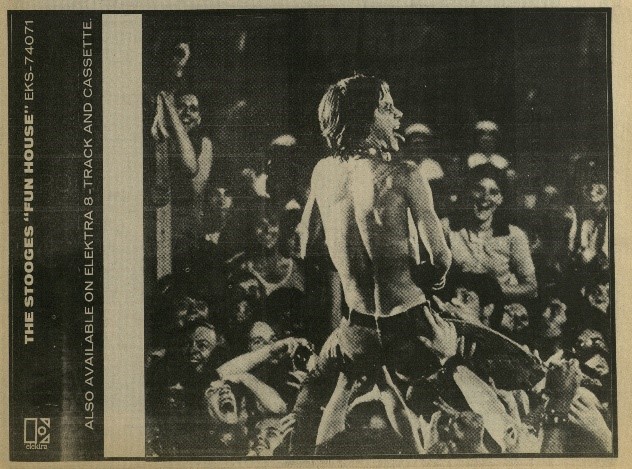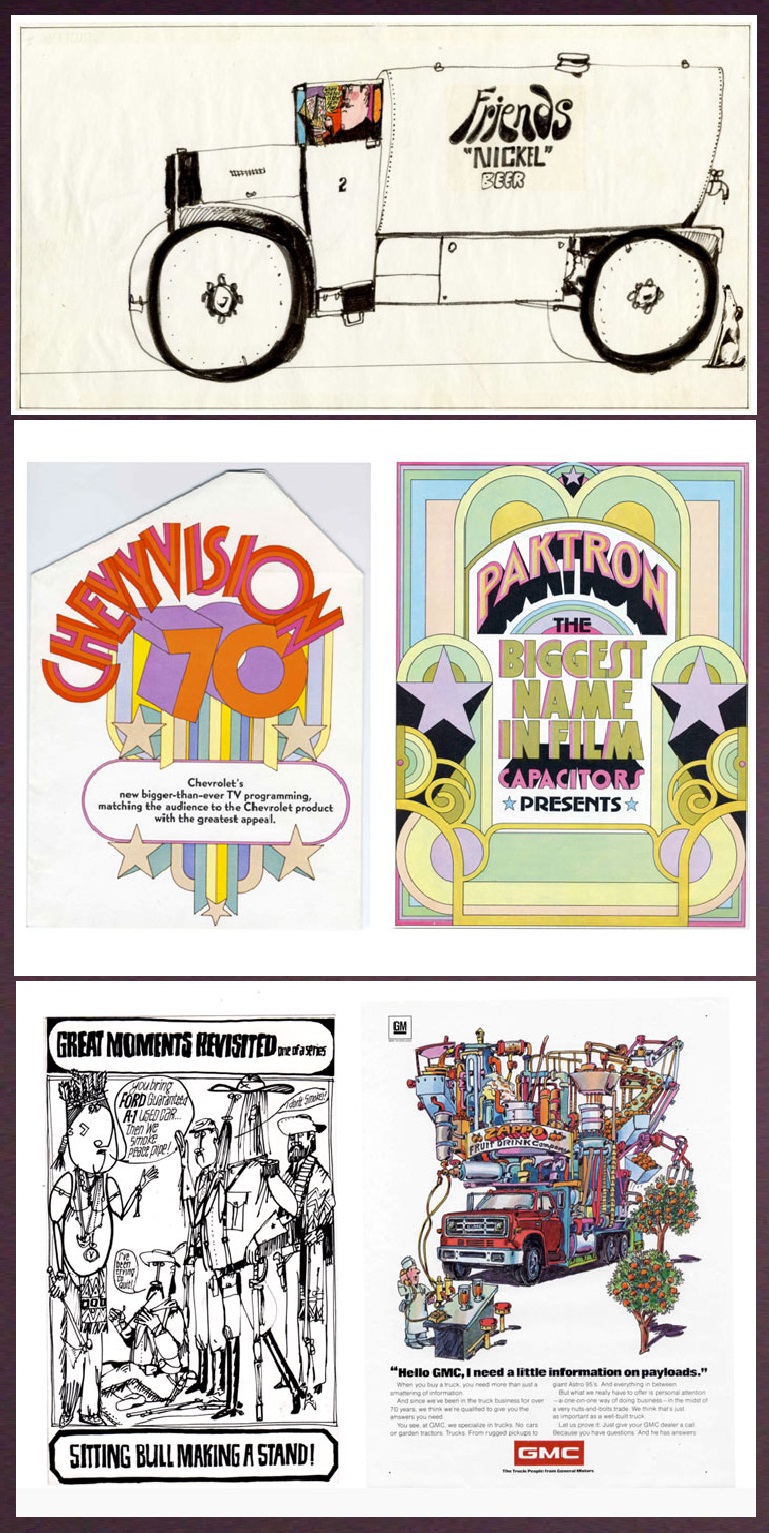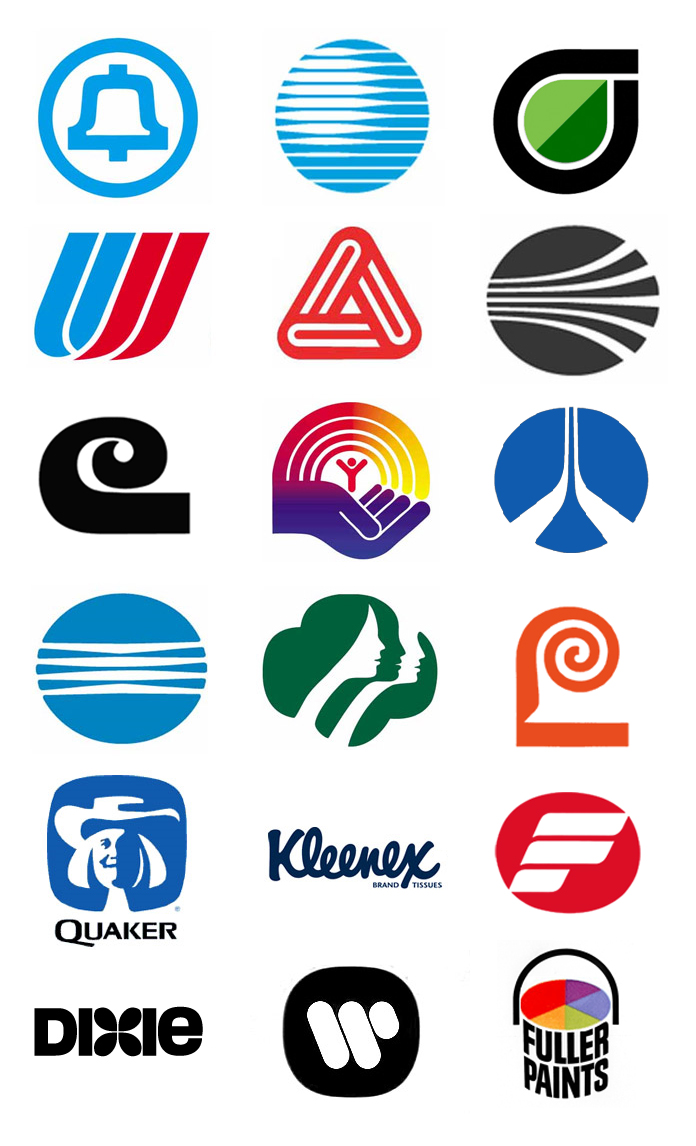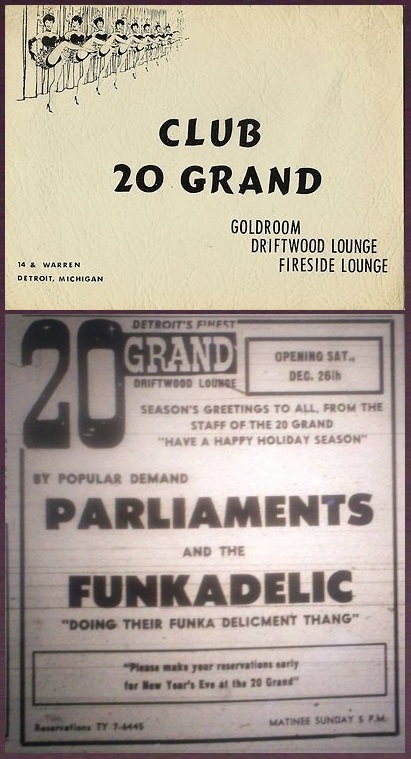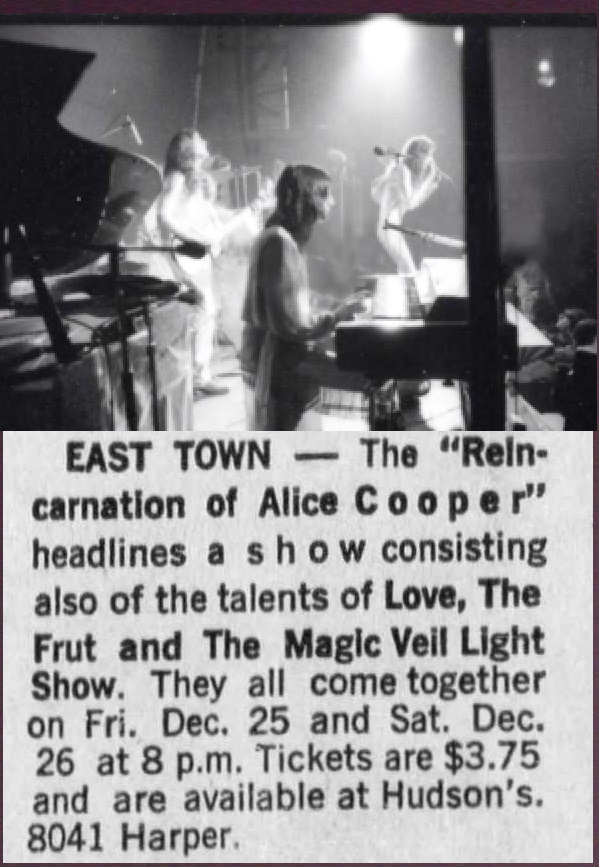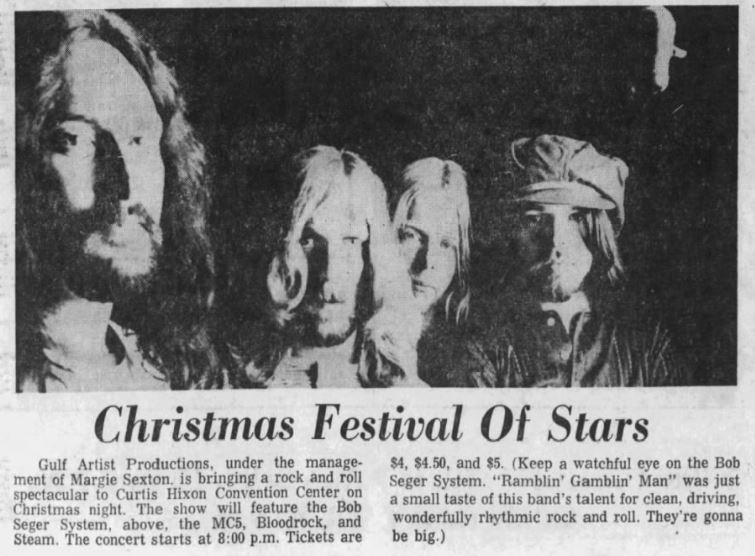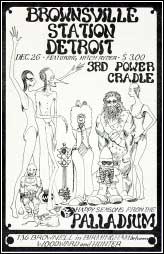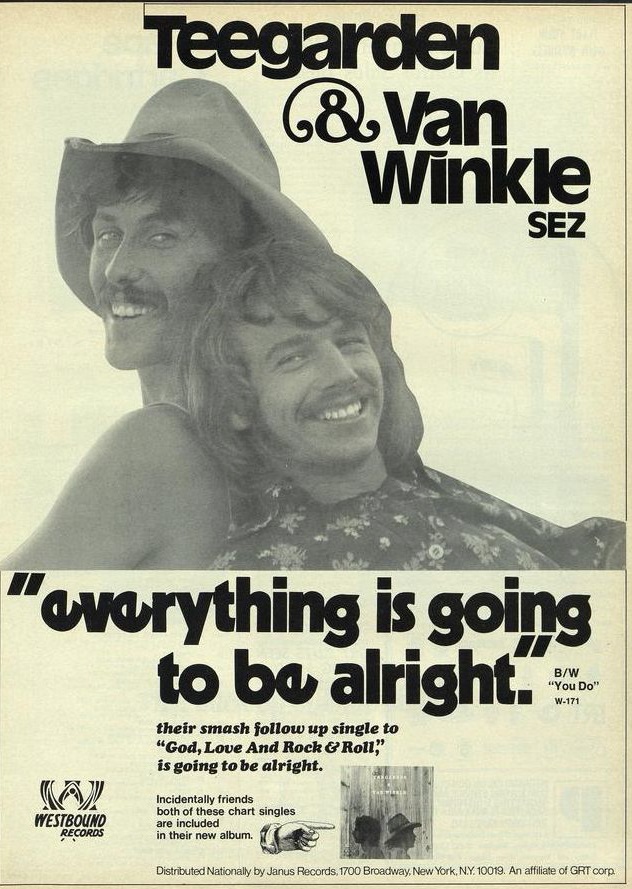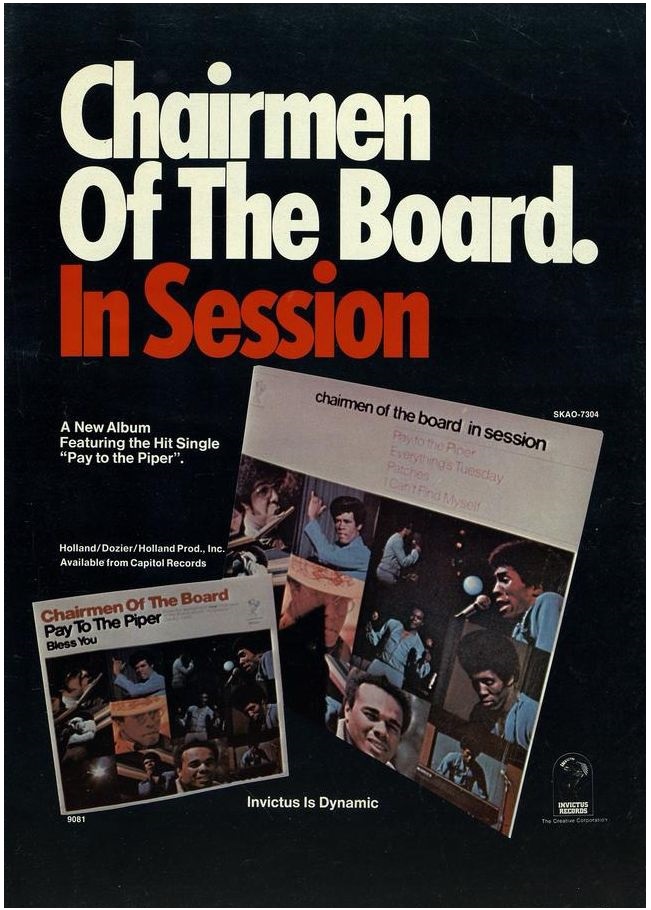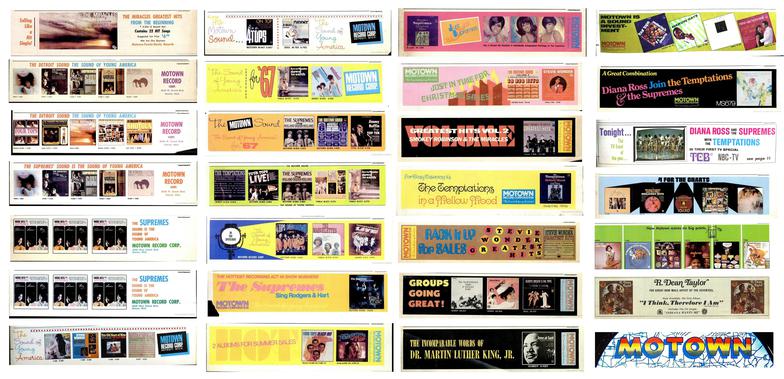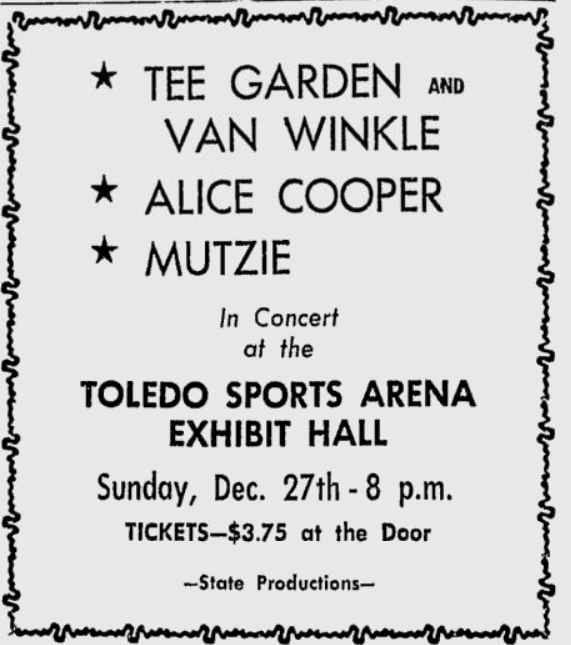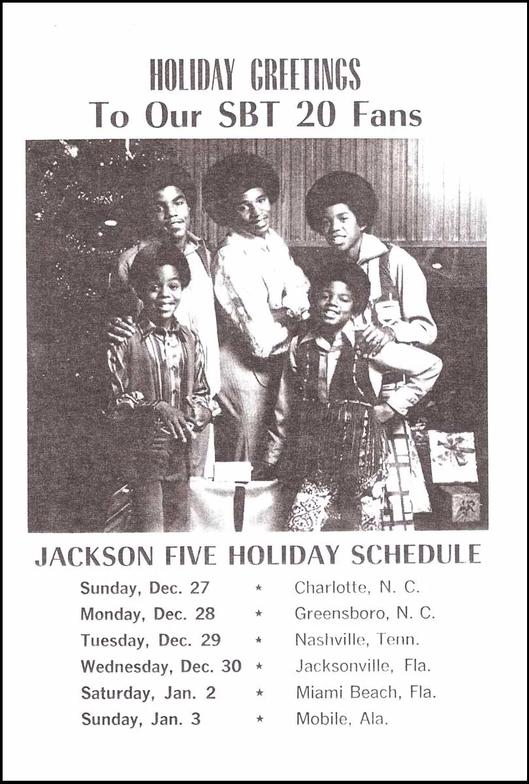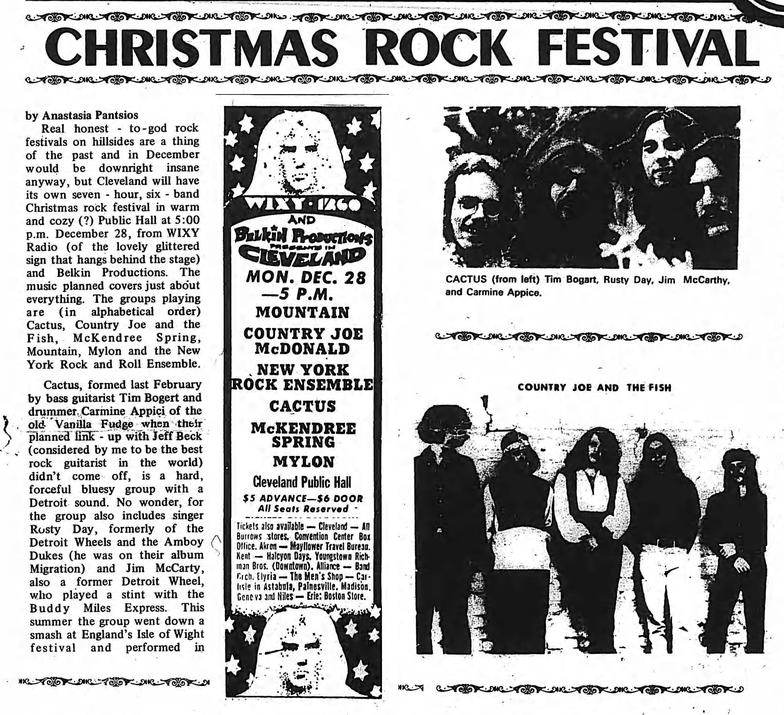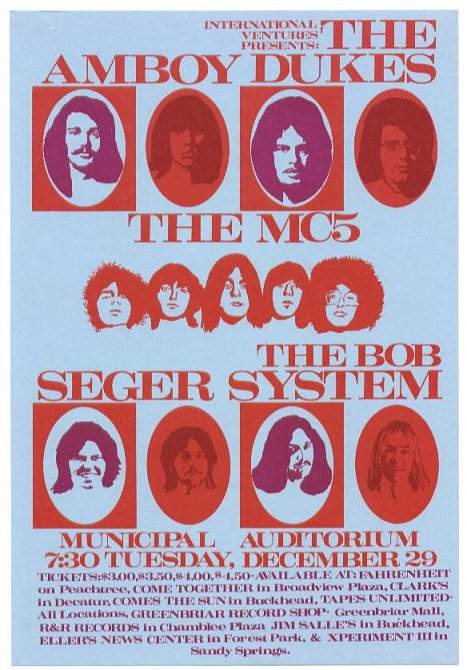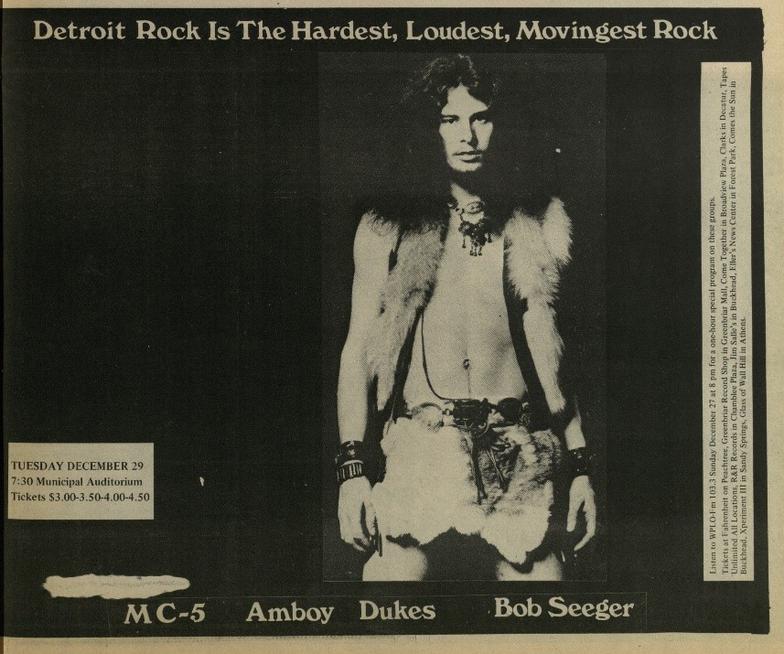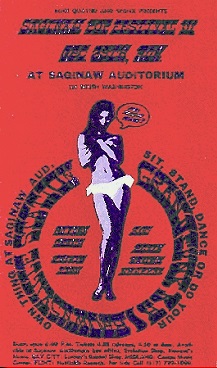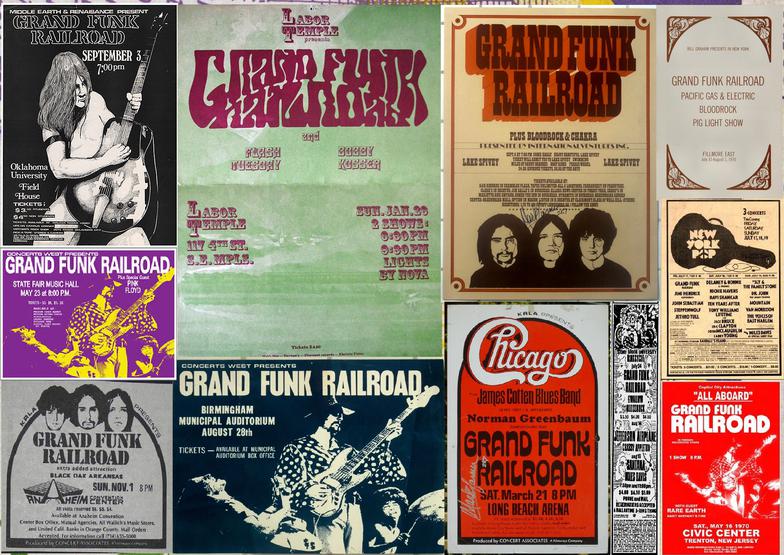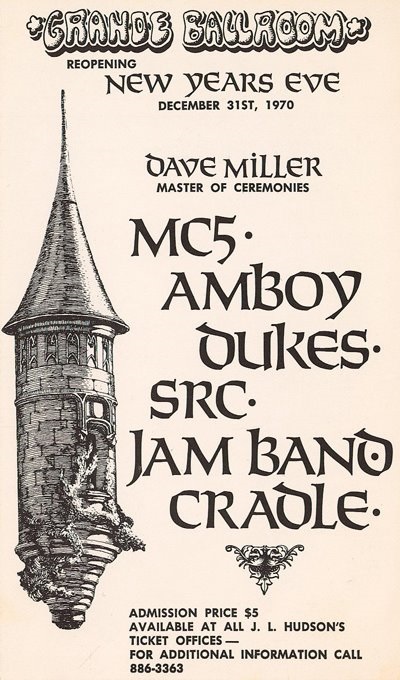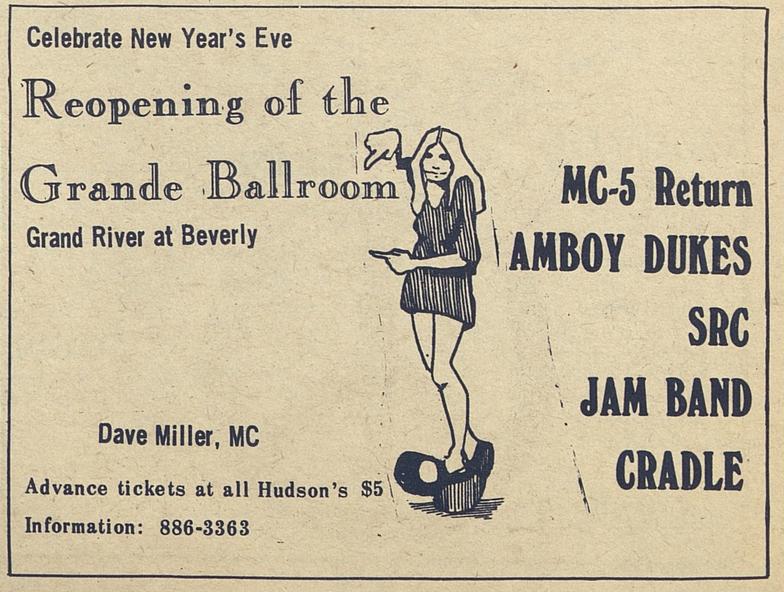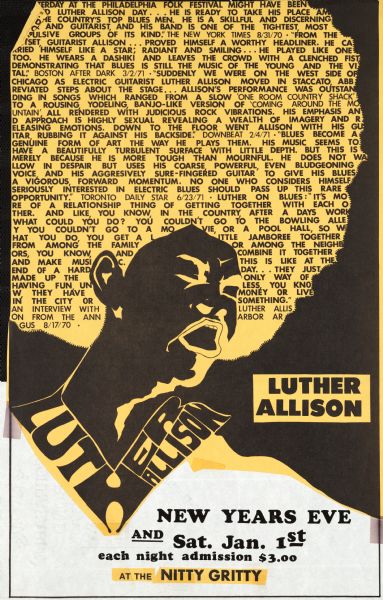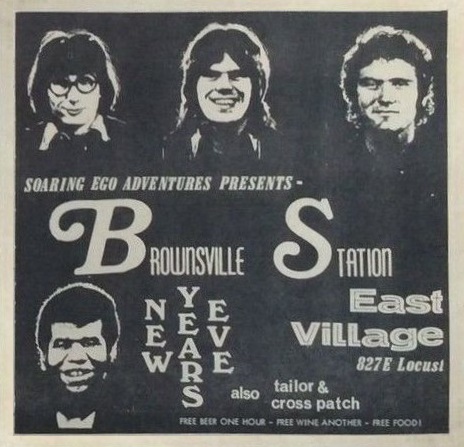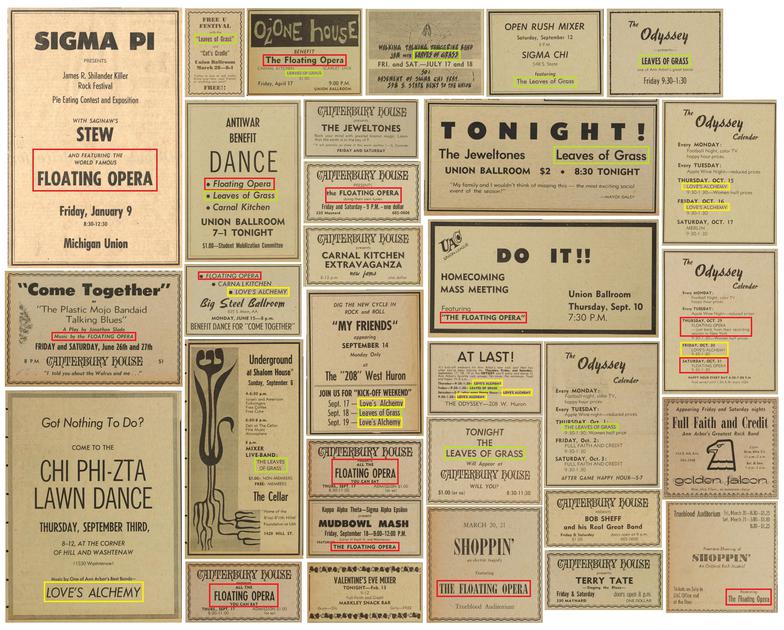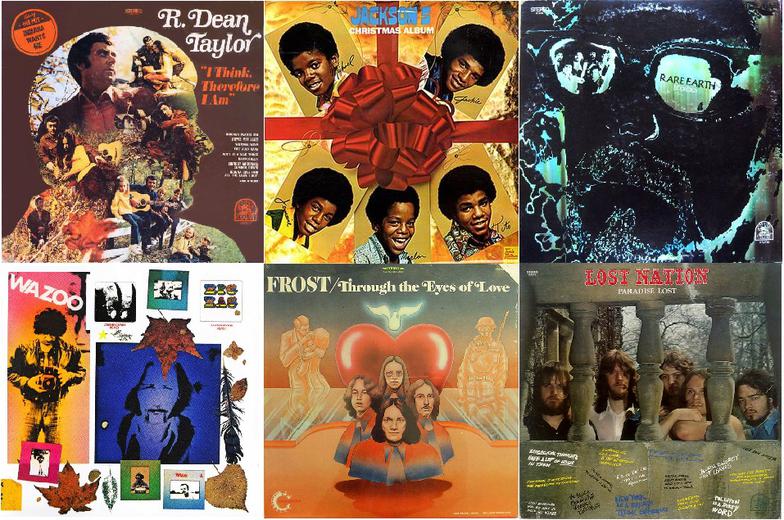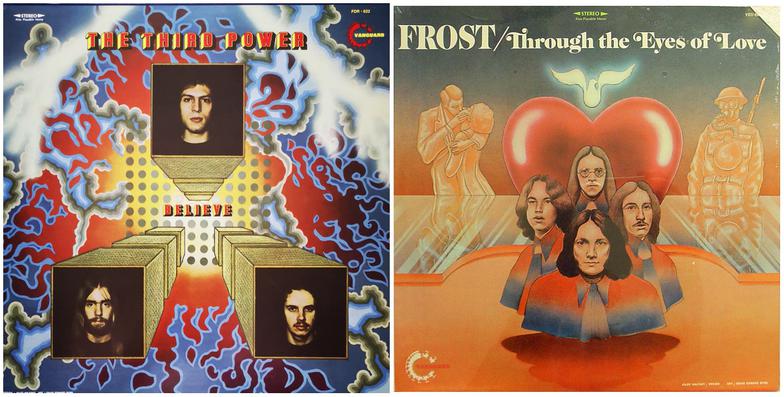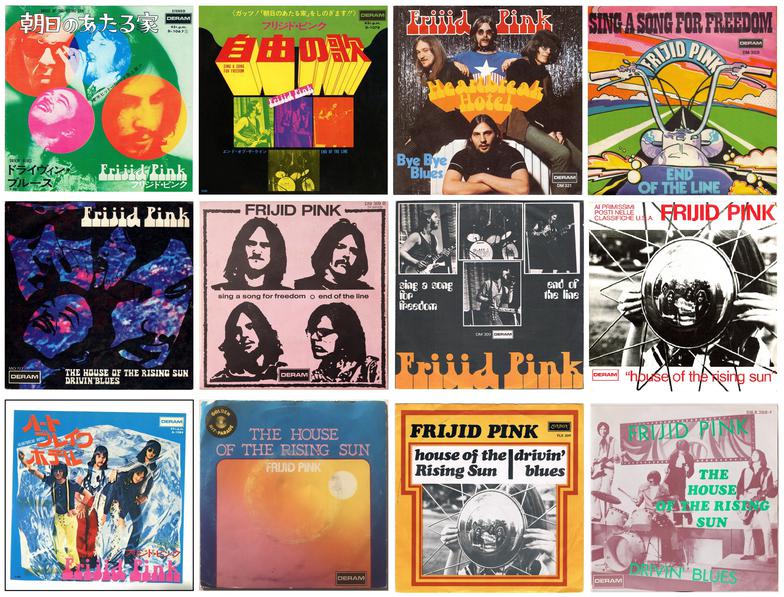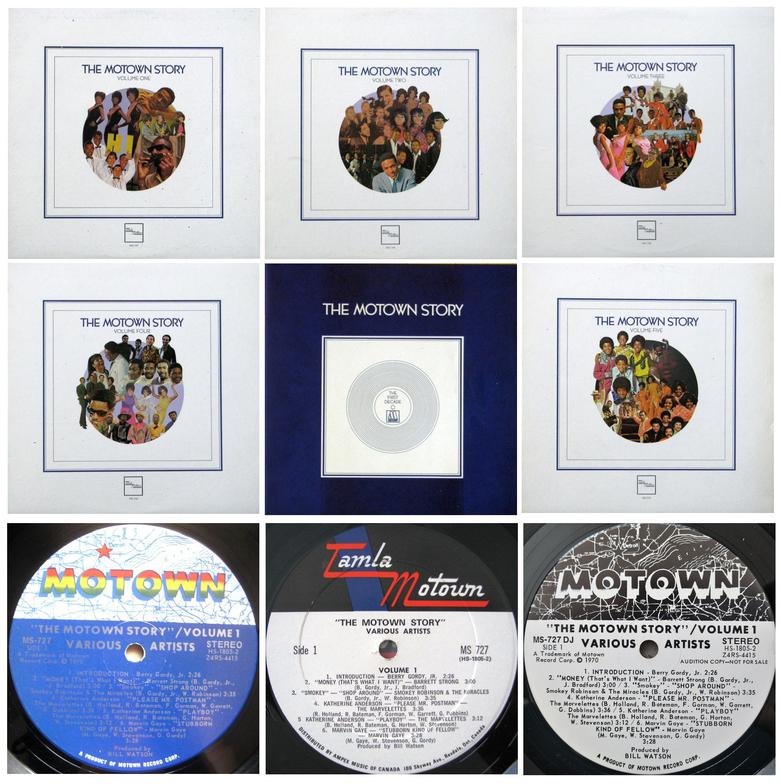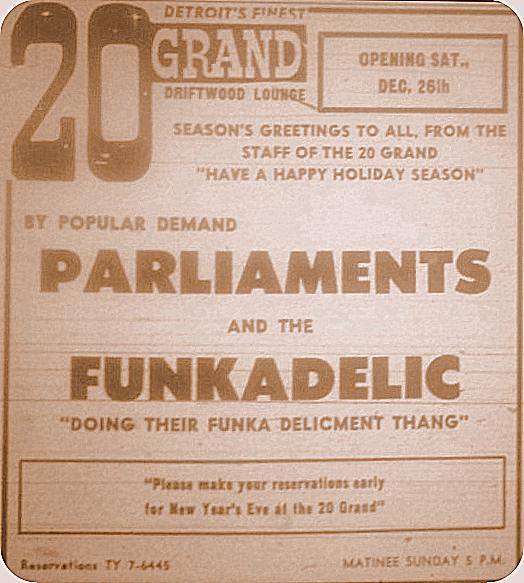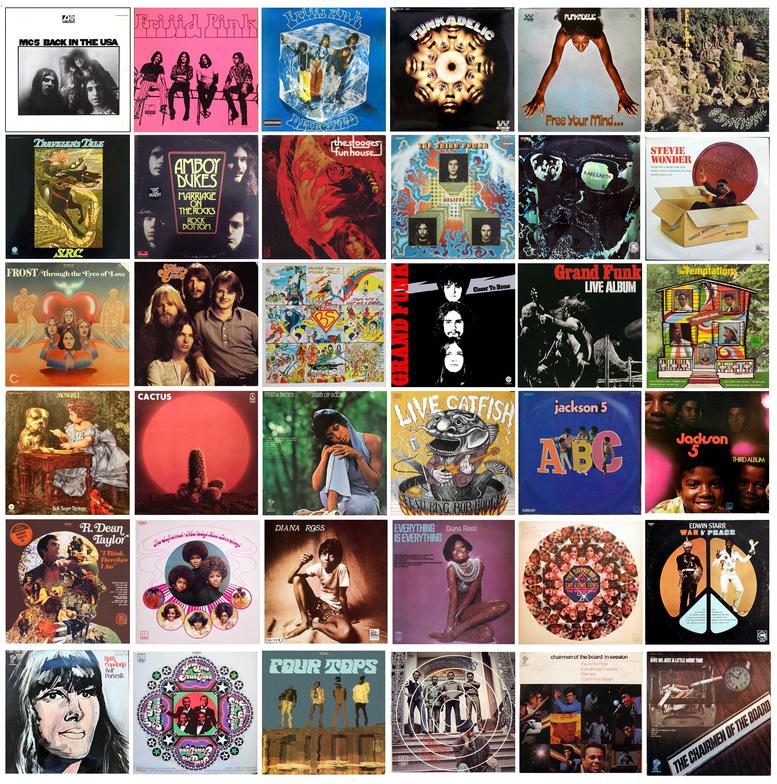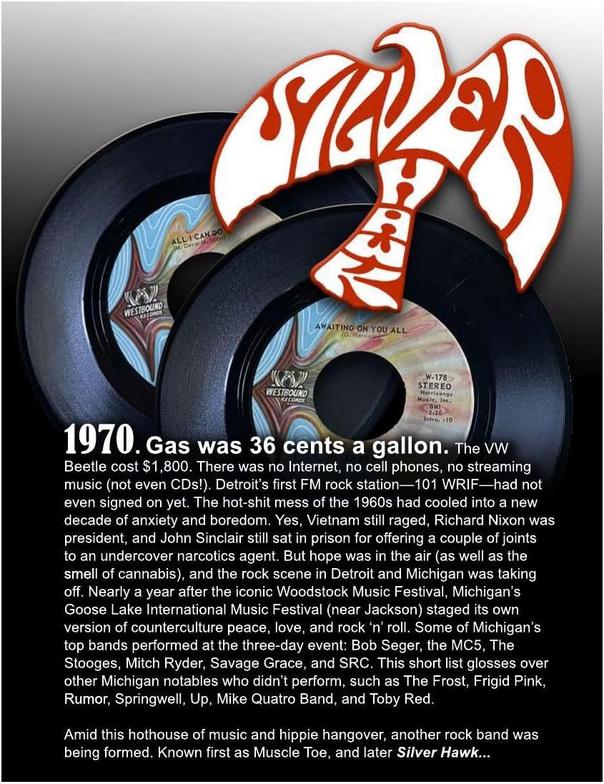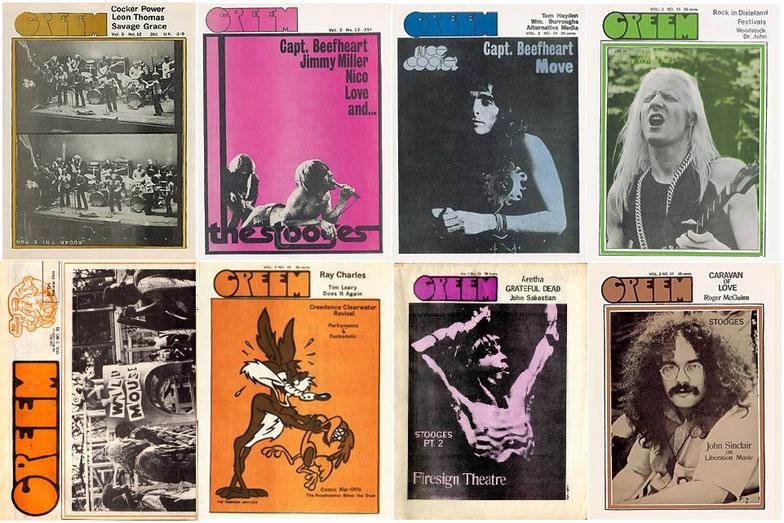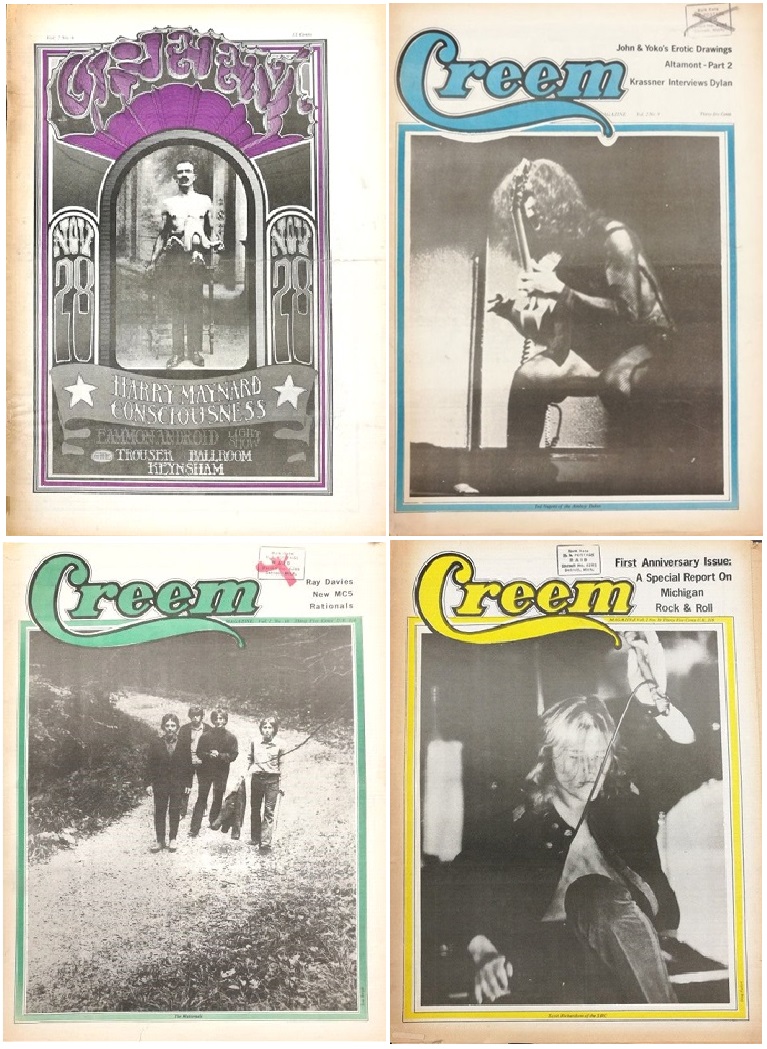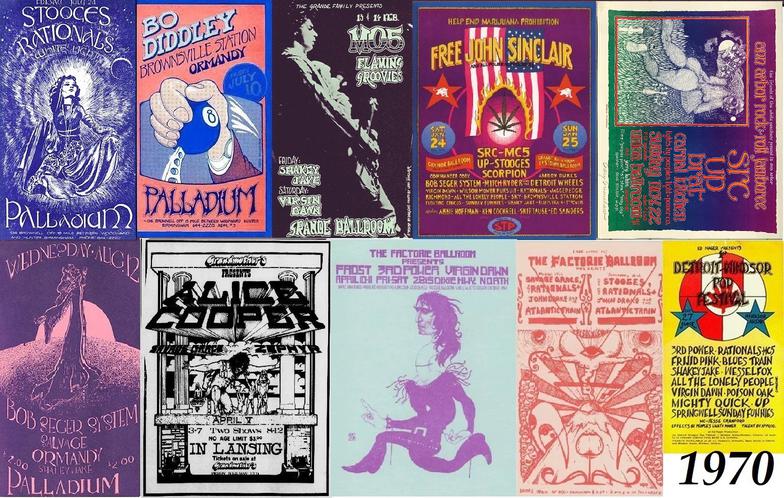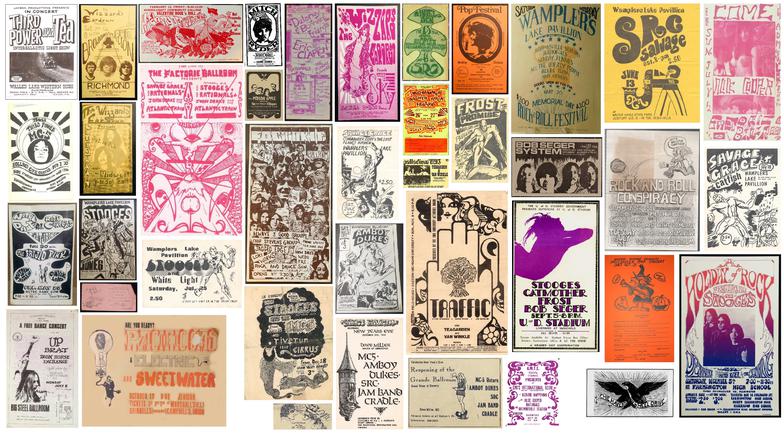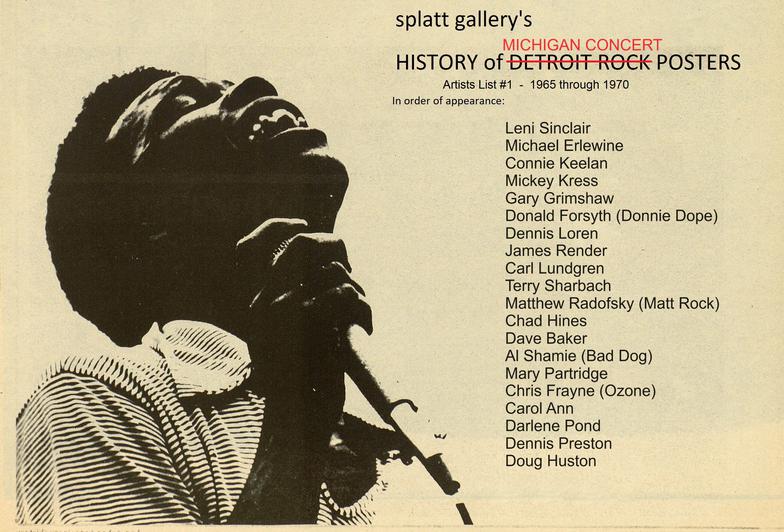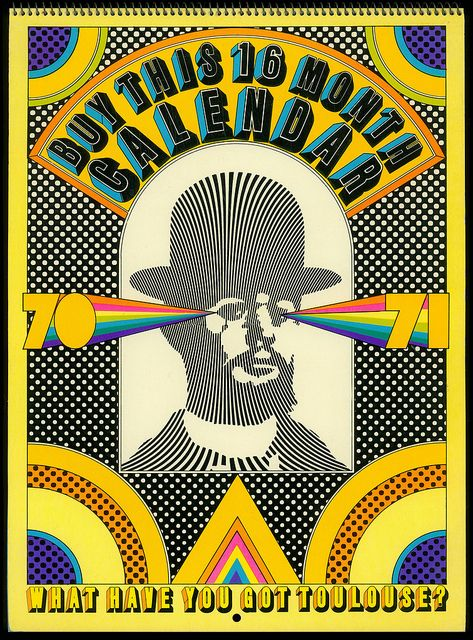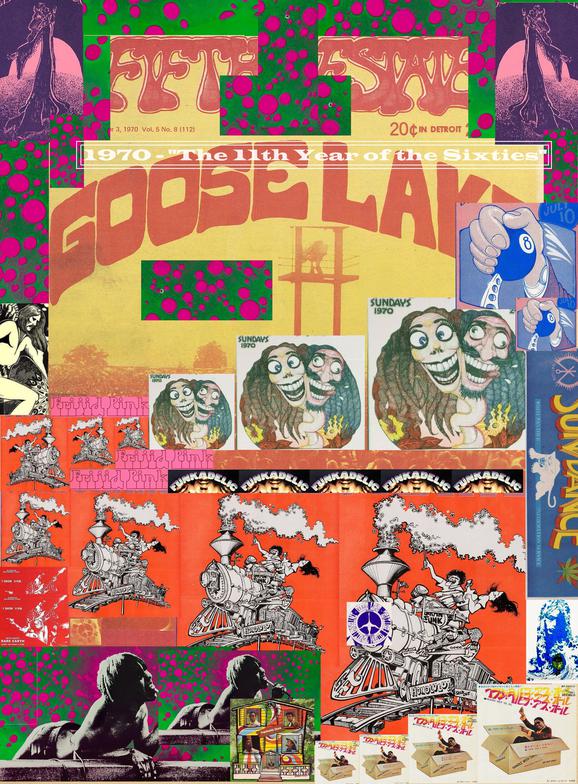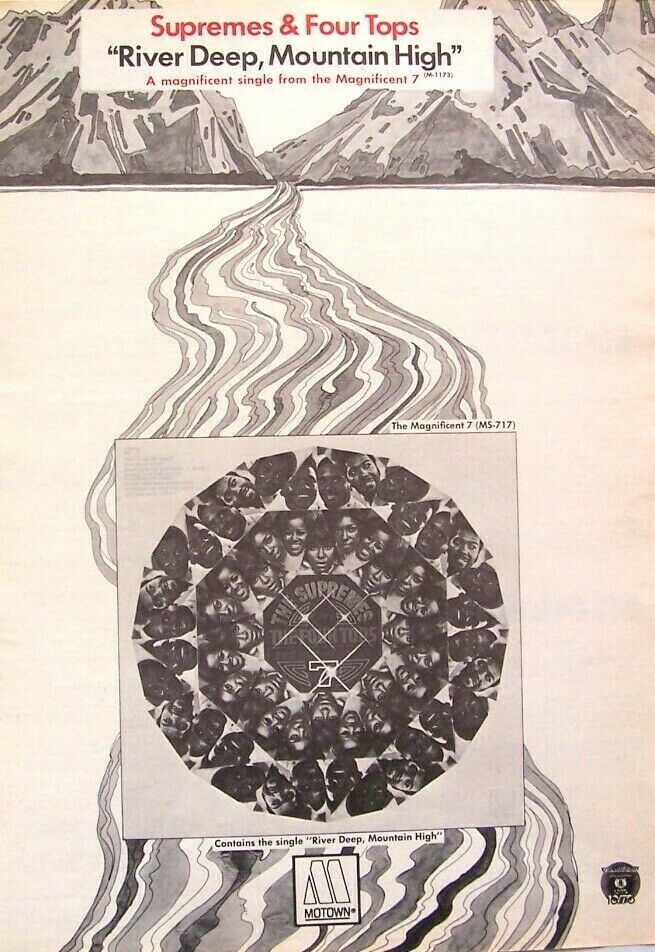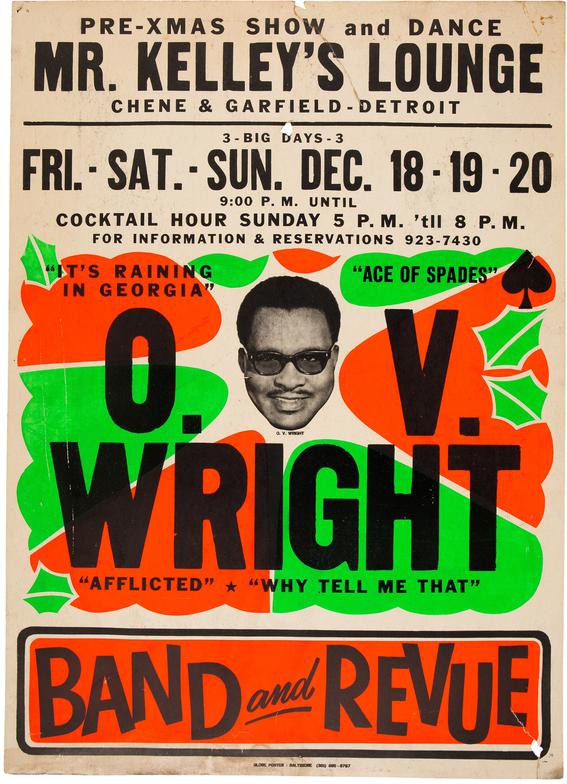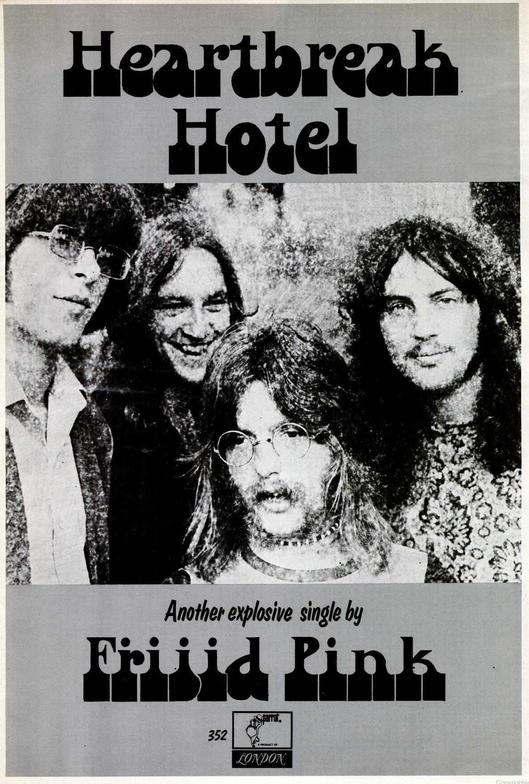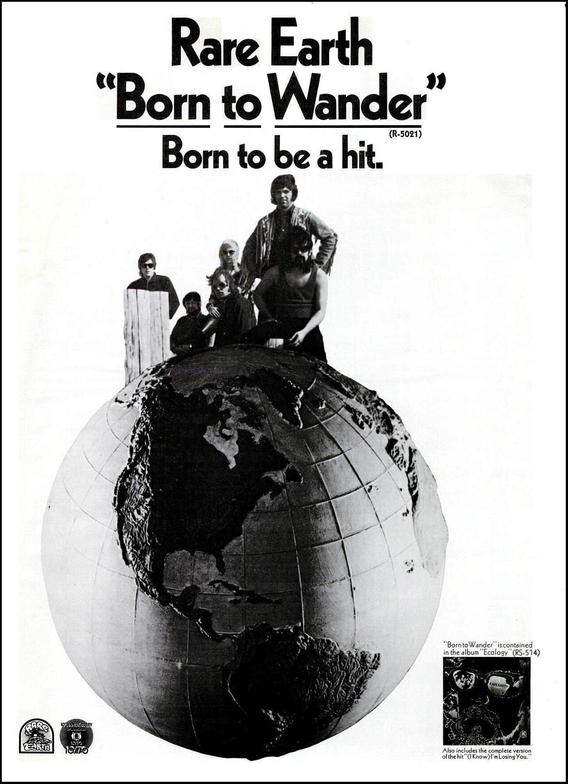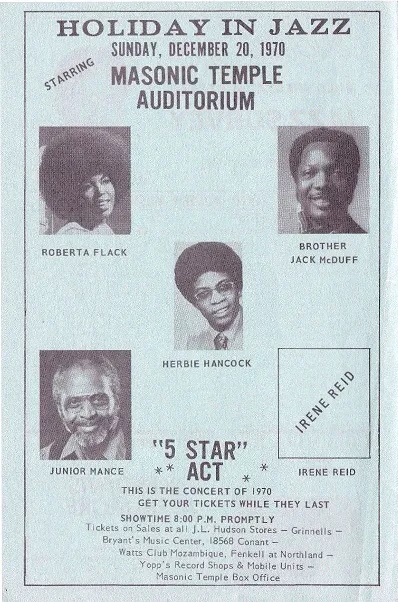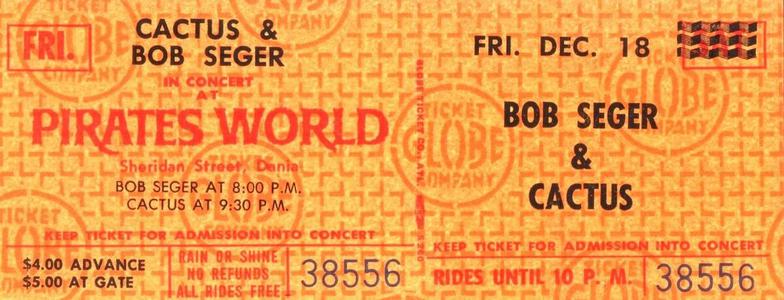Splatt Gallery
Double click here to add text.
Splatt Gallery's History of Michigan Concert Posters
************************************************************
Volume Six - 1970 - Page Twenty
An Elektra Records ad for the Stooges “Funhouse” album in the December 21, 1970 issue of The Great Speckled Bird newspaper in Atlanta, Georgia.
Meanwhile, in a completely different world in downtown Detroit, graphic illustrator Ed Fella was in the middle of a flourishing career in commercial advertising. Perhaps second only to Madison Avenue in New York City, Detroit was a center for ad agencies due to the automobile industry’s voracious appetite for advertising. Fella began his career immediately after graduating from Cass Tech High School in 1957, and while the work was confined in terms of creativity, Fella called it “hack work”, his natural curiosity and love of experimentation had earned him the nickname of “the King of Zing”.
Throughout the 1970’s, Fella began spending more and more of his off-hours absorbing Detroit’s cultural scene, hanging out in jazz clubs and taking on side jobs for the alternative arts community. We will catch up again with Ed Fella when he finally leaves the commercial art world behind and becomes a self-described “exit-level designer” in 1987. For now, here’s a look at some of his work up to 1970, which only begins to hint at the radical, ground-breaking work to come.
While we’re on the subject of graphic designers and commercial illustration, we want to mention New York artist Saul Bass. He began his 40-year career designing posters and opening title sequences for movies, most notably for films by Alfred Hitchcock and Otto Preminger. These works alone established Bass as a seminal artist, but he also created corporate logos, including some of the most iconic.
By 1970, he had already created the eternal images for Quaker Oats, Fuller Paints, Bell Telephone, Dixie Cups, Lawry’s Foods, Rockwell International, Alcoa Aluminum, and Continental Airlines. Later in the decade, will come the logos for the Girl Scouts of America, Kleenex, AT&T, the United Way, United Airlines, Minolta, Warner Communications, and Geffen Records, among many others.
Christmas in Detroit was never the same after 1968, the final year that the Motown stars would come home for the holidays with an annual celebratory week of shows at the Fox Theater. George Clinton brought it home however, for Christmas 1970, returning for a multi-night stand at the club where he originally birthed the two-band concept of Parliament–Funkadelic during the summer of 1969, at The 20 Grand.
Alice Cooper celebrated Christmas, December 25-26, 1970, with shows at the Eastown Theater in Detroit called "The Reincarnation of Alice Cooper". Their new producer Bob Ezrin joined the band on-stage playing keyboards. The new single “I’m Eighteen” had been out for about a month and Alice was about to hit the big time.
Alice Cooper – I’m Eighteen (1970)
https://www.youtube.com/watch?v=yD1gzmf4OPQ
Looking like The Three Wise Men Plus One, this newspaper ad is for a Christmas night show, December 25, 1970, in Tampa, Florida by the Bob Seger System, with the MC5, Bloodrock and Steam. Seger and Bloodrock tour sites include this show, but the MC5 Gateway does not, so maybe the Five did not make it.
Poster/handbill by Chad Hines for Brownsville Station, Detroit, Third Power, and Cradle at the Palladium in Birmingham, Michigan, December 26, 1970.
Whatever the Cosmic Circus was, it was on the move. Maybe it was the work of Frut, the crazy band with a knack for organizing shows. There was a show in Warren, Michigan on December 26, 1970 and a show in Utica, Michigan on December 28th.
The line-up was the same for both, with the Frut, Virgin Dawn and “Jeff Beck’s Cradle!”, which may have been an inside joke on the girls with reference to Suzi Quatro leaving the band to work with British producer Mickie Most, who also managed Jeff Beck. Poster by an unknown artist.
Full-page ad from the December 26, 1970 issue of Billboard magazine for Teegarden & Van Winkle’s second single on Westbound Records label.
Full-page Motown Records ad from the December 26, 1970 issue of Billboard magazine, promoting “The Magnificent 7”, a team-up of the Four Tops and the post-Diana Ross Supremes. Their version of “River Deep, Mountain High” was the highest charting version of the song, outpacing the original by Ike & Tina Turner. The ad is very similar to the Supremes' "Stoned Love" ad.
The Magnificent 7 – River Deep, Mountain High (1970)
https://www.youtube.com/watch?v=98IKK6Kvtig
Full-page Invictus Records ad from the December 26, 1970 issue of Billboard magazine, promoting the second album by the Chairmen of the Board, and the second single from the album, “Pay To The Piper”. Here is a clip of the group “performing” the song on the Soul Train TV show.
Chairmen Of The Board - Pay To The Piper (1970)
https://www.youtube.com/watch?v=uoHpLkvHMh8
A regular feature of Billboard magazine was a thin strip advertisement at the bottom of the front cover. Shown above are a collection of Motown Records ads that claimed the coveted spot, from April 1965 through December 26, 1970.
Newspaper ad for Teegarden & Van Winkle, Alice Cooper, and Mutzie in Toledo, Ohio on December 27, 1970.
Poster with tour dates for their final shows of their first US tour, from December 27, 1970 through into the next year. It was an odd itinerary, kicking off in Philadelphia, Pennsylvania on May 2nd, followed by two shows in California in June, and then dropping off all the way until October 9th, seven shows, including Detroit on October 17th, and then finally, the batch of shows on this poster, but it is considered the group’s first tour.
A “Christmas Rock Festival” with Cactus, McKendree Spring, Mylon, New York Rock Ensemble, Country Joe McDonald, and Mountain in Cleveland, Ohio on December 28, 1970. The article mistakenly identifies Rusty Day as formerly of the Detroit Wheels, but also correctly as formerly of the Amboy Dukes.
Stylish poster for an all-Michigan bands show in Atlanta, Georgia, December 29, 1970, with Amboy Dukes, MC5, and Bob Seger System.
Newspaper ad for the all-Michigan bands show in Atlanta, Georgia, December 29, 1970. “Detroit Rock is the Hardest, Loudest, Movingest Rock”. The sideways text states that radio station WPOL-FM would be broadcasting a “one hour special program on these groups” on Sunday night, two days before the concert.
Humorous (?) do-it-yourself concert review form for the all-Michigan bands show in Atlanta, Georgia, December 29, 1970, published in The Great Speckled Bird underground newspaper with a nice photo of the Seger System's drummer Pep Perrine's drum kit.
They resurrected this old chestnut, already appropriated for at least three or four festivals in 1969, Carl Lundgren’s “Who Needs Miami” poster, here again for the Saginaw Pop Festival III, December 29, 1970.
Brownsville Station and Grand Funk Railroad are the names in the circular lettering. Frijid Pink and Blues Train also performed and look like two of the names inside the circle, but the other two names are too illegible, and we only know of the four bands to have played.
For GFR, the Saginaw Pop Festival III, December 29, 1970, was their first show back in the home state (pretty close to the hometown, in fact), since the show at Cobo Arena in Detroit in April. But the band had certainly been busy outside of Michigan. During the year, they performed at least 98 shows in 1970, the most they would play in a single year.
Announced as a “re-opening”, the Grande Ballroom, which had been dormant since the end of February, (except for a John Sinclair Birthday Celebration on October 2nd) appeared to be back in business with this New Year’s Eve concert, December 31, 1970, MC Dave Miller had even returned. Performing with the MC5 were the Amboy Dukes, SRC, Jam Band, and Cradle (formerly the Pleasure Seekers, the band formed by the Quatro sisters, their brother Michael was also on the bill with his Jam Band). Poster/handbill by an unknown artist.
Cradle – Ted (live at the Grande Ballroom) (12/31/70)
https://www.youtube.com/watch?v=oQ_KiuKHLWY
Newspaper ad by an unknown artist for the “re-opening”, the Grande Ballroom, New Year’s Eve, December 31, 1970. There had been less than 20 shows at the Grande Ballroom through all of 1970, and all but two of those had been during the first two months of January and February.
Poster for a show by Luther Allison at the Nitty Gritty in Madison, Wisconsin, December 31, 1970. The text in the hair is taken from a Luther Allison interview in The Ann Arbor Argus newspaper.
An ad for Brownsville Station in Des Moines, Iowa on New Year’s Eve, December 31, 1970.
Going by the ads in the Michigan Daily newspaper for the year 1970, the hardest working bands in Ann Arbor that year were The Floating Opera and Love’s Alchemy, the winner and runner-up, respectively, of the “Battle of the Bands” in December 1969.
Turning up just as frequently, if not more, was the band Leaves of Grass. Also often-seen were Carnal Kitchen, Full Faith and Credit, and the Jeweltones.
The pace of album releases by Michigan artists had picked up significantly since the dam seemed to break at the end of 1969. This was the dawning of the “golden age” of the “album-rock era”, as album sales outpaced the sales of singles, and as artists emphasized the album as a complete work to be heard in its entirety. During the 1970’s the music business would become larger than Hollywood.
We’ve featured many of album releases through the year 1970 as we’ve progressed along, particularly good ones such as Funkadelic (two albums), and Seger’s return to form “Mongrel”, follow-up second LP’s from the Stooges and MC5, Parliament’s debut “Osmium”, and unsuccessful final efforts by Frost and SRC. Grand Funk Railroad couldn’t produce them fast enough, they doubled their recorded output from two to four albums, and the two new ones went Gold so quickly that they pulled the previous two up to Gold as well.
Motown’s rock off-shoot, Rare Earth, took off with nearly a dozen releases, in addition to local talent, also issuing UK bands such as Toe Fat and Pretty Things. Possibly their most unlikely act, a Canadian singer, R. Dean Taylor, had a #1 hit with the insipid “Indiana Wants Me”.
No doubt that Rare Earth benefitted by being part of the Motown juggernaut, recall that at the beginning of the year Motown had already released an astounding 257 albums since their start in 1961. They added nearly another 40 in 1970, down from the peak of 60 album releases in 1969. Motown’s newest stars, the Jackson Five, released three albums in 1970, their second and third, and a Christmas album.
There were also a couple of albums from 1970 that brought back some names from the past, the band Lost Nation formed out of members of the Unrelated Segments and their album on the Rare Earth label shows them having moved far away from their garage-rock roots into a deep dive into prog.
The even stranger band, Wazoo, with a release on their own Zig Zag label, holds even a bigger surprise, as it included George Katsakis, the saxophonist who goes way, way back to recording on Jack Scott’s first record, and a founding member of The Royaltones, Detroit’s first big rock and roll band and the band that launched the careers of future Funk Brothers, Dennis Coffey and Bob Babbitt.
How Katsakis ended up in the proto art-damage weirdness of Wazoo is a good question, but good for him. The band also included bass player John Fraga, who will later be one of the founding members of The Rockets. The first song here is fairly straight forward, but the second one is a dare to listen all the way through.
Lost Nation – Paradise Lost (album) (1970)
https://www.youtube.com/watch?v=ouUJuNLvEGI
Wazoo – BH Man (1970)
https://www.youtube.com/watch?v=DGjxVmxjTcY
Wazoo – Arnie Funny Far Fackor (1970)
https://www.youtube.com/watch?v=_JLvbHs6dNU
These two Michigan rock albums, the debut album by Third Power and the third album by Frost, both released in 1970, were both on Vanguard Records and both featured cover art by poster artist David Edward Byrd, perhaps best known for his posters for the Fillmore East.
Frijid Pink sold a lot of singles outside of the United States in 1970, usually released with picture sleeves, above are a dozen of the best ones, from Japan, Germany, Spain, Italy, Belgium, Australia and the Netherlands.
In 1970, in celebration of its first decade, Motown Records released “The Motown Story”, a five-album boxed set with a 24 page booklet, inner picture sleeves and textured graphics on the box. The discs had the classic Motown label, with Detroit as the red star on a map.
The Canadian issue had the flowing Tamla Motown logo, nicely colored in red, white, and blue. The promo DJ copies had the Motown map in black and white.
The five picture sleeves and the box top are also shown above. The set provided 58 tracks, nearly every one with a spoken intro by the artists.
A collection of the major Michigan rock and Motown albums that were released in 1970.
Debut albums included Frijid Pink and Funkadelic (both of whom released two LP’s in the year), Parliament, Third Power, Jackson 5 (also two albums), Savage Grace, Ruth Copeland, Cactus, and Brownsville Station.
The Invictus record label, founded by Holland-Dozier-Holland after leaving Motown, released its first batch of albums, by Freda Payne, Chairmen of the Board, Ruth Copeland, and Parliament.
A synopsis of the Michigan rock scene in 1970 concludes with the forming of the band Silver Hawk, formerly known as Muscle Toe. We will begin to find shows by Silver Hawk starting in May 1971.
Round-up of the rest of the 1970 issues of CREEM magazine, since we last left off with the dual March issues. These issues featured the magazine’s second logo/masthead style. Five of the eight feature Michigan artists on the covers, with the Stooges (twice), Alice Cooper, Parliament Funkadelic, and John Sinclair.
The cover shots of the Joe Cocker band and Johnny Winter are from Michigan performances.
The previous four issues of CREEM magazine. Only three are from 1970 since the CREEM archive places the issue with the Stanley Mouse cover as December 1969. At any rate, all of these covers feature Michigan-related artists.
There was no January 1970 issue, the Ted Nugent cover issue is in the archive as February 1970, and confusingly, both the Rationals cover issue and the SRC cover issue are labeled March 1970.
Shown above are our annual ten favorite Michigan rock posters for 1970, and they are:
Stooges, Rationals – Birmingham Palladium – 7/24/70 – artist Carol Ann
Bo Diddly – Birmingham Palladium – 7/10/74 – artist Gary Grimshaw
MC5, Flaming Groovies – Grande Ballroom – 2/13/70 – artist Darlene Pond
Free John Sinclair Rally – Grande Ballroom & Eastown – 1/24/70 – artist Gary Grimshaw
Ann Arbor Rock & Roll Jamboree – 11/22/70 – artists Gary Grimshaw & Al Shamie
Bob Seger System – Birmingham Palladium – 8/12/70 – artist Carol Ann
Alice Cooper – Grandmother’s East Lansing – 4/5/70 – artist Perry Highway
Frost, Third Power, Virgin Dawn – Factorie Ballroom – 4/10/70 – artist Al Shamie (Bad Dog)
Savage Grace/Stooges – Factorie Ballroom – 4/17/70 – unknown artist
Detroit-Windsor Pop Festival – Windsor Arena – 6/27/70 – artist Darlene Pond
By a rough count, we have documented about 260 Michigan concert posters for the year 1970.
New artists that emerged during the year included Perry Highway, Bryan Clark, Robert Daniel, Jem Targal, and JAP Studios.
The artists that were most prolific in the year were Gary Grimshaw, Al Shamie, Carol Ann, Darlene Pond, Doug Huston, and Perry Highway.
There were over 100 pieces by “an unknown artist”, the best of some of these unknown artists are shown above.
The list shown above are the Top Twenty poster artists for the years 1965 through 1970 in our history of Detroit Rock Posters (make that Michigan Concert Posters) so far (1965 – 1970).
Here is an extremely brief association for each of them:
Magdalene Arndt (Leni Sinclair) – Detroit Artists Workshop, Trans-Love Energies
Michael Erlewine – Ann Arbor band The Prime Movers
Connie Keelan – Detroit band The Spike Drivers
Mickey Kress – The Fifth Dimension club, Ann Arbor
Gary Grimshaw – first Grande Ballroom artist
Donald Forsyth (aka Donnie Dope) – Northville Cavern, Grande Ballroom
Dennis Loren – remote from California – relocates to Detroit in 1970
James Render – Silverbell Hideout and other teen clubs
Carl Lundgren – Grande Ballroom
Terry Sharbach – Grandmother’s, East Lansing
Matthew Radofsky (aka Matt Rock) – Grande Ballroom
Chad Hines - Northville Cavern, Birmingham Palladium
Dave Baker – Ann Arbor Argus
Al Shamie (Bad Dog) – Ann Arbor Argus
Mary Partridge (with Tom Wall or Phil) – Village Pub
Chris Frayne (Ozone) – Commander Cody’s brother
Carol Ann – Birmingham Palladium
Darlene Pond - MC5 fan club, Grande Ballroom
Dennis Preston – Lansing, Michigan
Doug Huston – Grandmother’s, East Lansing
Of course, also looming largely is Stanley Mouse, Detroit to his core, but known as one of the San Francisco “Big Five” poster artists.
Promoters such as Jeep Holland, Dave Leone, Punch Andrews, and Peg Tiilikka (Northville Cavern) should also be mentioned for the large number of posters made for their clubs that have few, or no, artist credits, possibly made by the promoters themselves.
And finally, honorable mention to many poster artists that were not quite as prolific, including Rob Tyner, Robin Sommers, Jerry Younkins, David Carlin, Robert Rubyan, John Manikoff, Greg DeHike, Bonnie Green, Chris Morton, Ken Victor, Jas R. Houndshell, Perry Highway, Dennis Garascia, Linz (CREEM magazine), Bryan Clark, Robert Daniel, Jem Targal, and JAP Studios.
A 16 month calendar that bridges 1970 into 1971, "What Have You Got Toulouse?" , looking extremely pyschedelic.
Volume Six - 1970 - The End
Back to Main History Page - HERE
Gary Grimshaw’s cover art for the Ann Arbor Argus reprinted in the December 23, 1970 issue of the Space City newspaper in Houston, Texas.
Poster/flyer for “Holiday In Jazz” at the Masonic Temple Auditorium in Detroit, Michigan on December 20, 1970, featuring Roberta Flack, Brother Jack McDuff, Herbie Hancock, Junior Mance, and Irene Reid.
Full-page ad in the December 19, 1970 issue of Billboard magazine for the lead-off single from Rare Earth’s fourth album.
Rare Earth – Born to Wander (1970)
https://www.youtube.com/watch?v=uO-Dmpw_w2c
Full-page ad in the December 19, 1970 issue of Billboard magazine for another Frijid Pink single, a non-LP track. The band released two albums and three singles in a very productive 1970, all of these records were also released in numerous countries world-wide, charting higher in many of these than they did in the US.
Frijid Pink – Heartbreak Hotel (1970)
https://www.youtube.com/watch?v=Bkkf8F63Jtc
A Globe Poster for Mr. Kelley’s Lounge in Detroit, Michigan with blues artist O.V. Wright appearing December 18-20, 1970.
A ticket for Pirate’s World near Miami, Florida with Bob Seger and Cactus performing on December 18, 1970.


